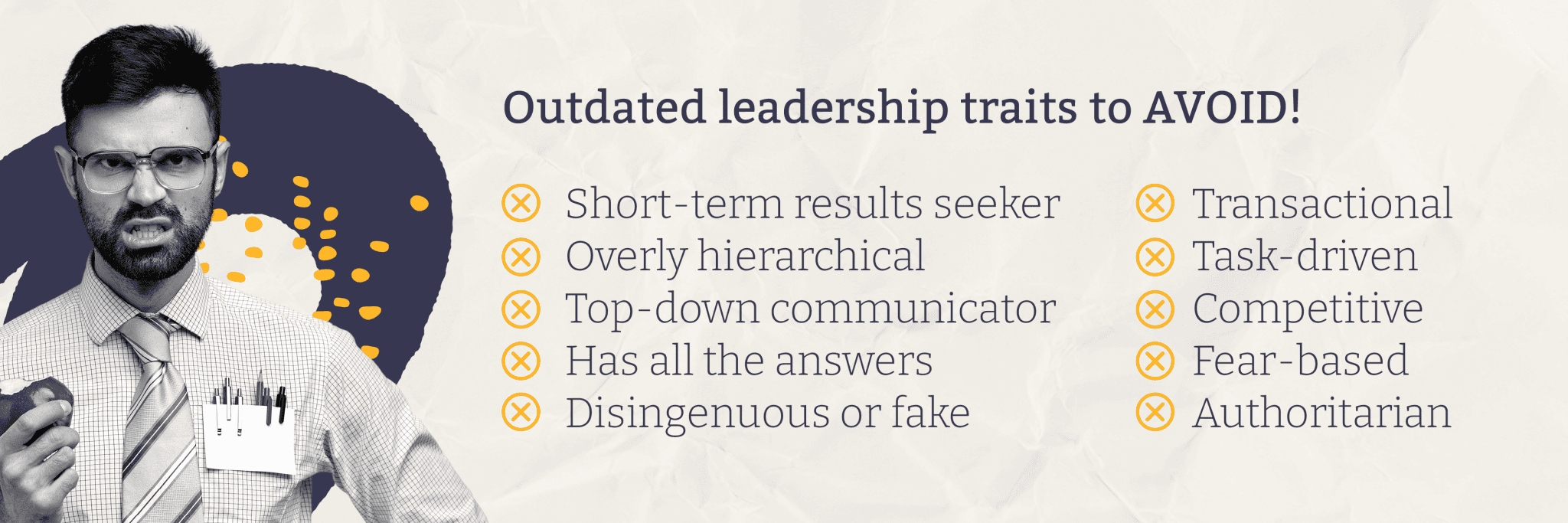Why You Need To Be a Compassionate Leader (and How To Become One)

Gillian French
Employee Experience Officer
21 Jun 2022

Employees of today won’t simply settle for a boss who doesn’t have their best interests at heart. Instead, they’re crying out for the dawn of the compassionate leader.
Leadership in the workplace is well overdue a makeover. Employees of today want to enjoy their job and work with a compassionate leader, one who genuinely cares about their people. Achieving this will require us to disrupt traditional outdated values associated with leadership, like top-down and transactional communication. Thankfully, the tide is already shifting.
We need leaders who aren’t afraid to be human. In his bestselling book Humanocracy, business thinker Gary Hamel says: “In the age of upheaval, top-down power structures and rule-choked management systems are a liability.
“They crush creativity and stifle initiative. As leaders, employees, investors, and citizens we deserve better.”
But how can leaders step up to the mark? This is a critical question when we consider that by 2025, 75% of Millennials will make up the global workforce. Like Gen Z, they have expectations that the companies they work for will focus on employee experience, social issues and responsibility, and diversity and inclusion, among other things.
These generations are highly educated, expect more choice from their employers, and have the benefit of an amplified employee voice. Now, it’s up to leaders to listen.
Embracing the self at work
Understanding the self is key to becoming a great leader and this is a lifelong journey. In the first season of the Employee Experience Podcast, I spoke to Claude Silver, Chief Heart Officer at VaynerMedia. She told me that being a great leader requires “becoming more empathetic, more kind”.
“It all leads back to emotional intelligence and self-awareness,” she said. “It’s very difficult to come into a situation truly if you don’t really know yourself. You can fake it a bit, but figuring out who you are and how you function is a lifelong journey, and I think that’s the first step in becoming empathetic, is really understanding you and becoming kind and compassionate to yourself.”
In the past, we’ve all been encouraged to come to work wearing armour. Moving forward, our new workplaces need to be psychologically safe first and foremost. As Claude said during our conversation, people need to feel they can “bring their authentic self to work” and to “speak up without fear of retaliation”. And this is true for leaders, too.
I have always been stumped by how employers promote a ‘fake way of being’ as something positive – or even necessary – to fit in at work. Shouldn’t board members want to cultivate an environment in which people can speak up and help avoid corporate disasters or indiscretions? And this begs a broader question, as echoed by Claude: at what price does your fear culture work?
As Claude said, “Great leaders are the ones that can come to the table with love”. Listen to her episode for the full conversation.

- VaynerMedia gave their staff five days off in August last year to help avoid burnout
- VaynerMedia have resource groups in their company to assist their employees with emotional wellbeing
- Frequent ‘all hands’ meetings mean employees hear from the top team on a regular basis
- A leader needs to first and foremost be available and accessible to their people
- Focus on people’s strengths in the workplace; focusing on weaknesses undermines their potential
A compassionate leader knows their team
If you want to become a more self-aware leader, you need to see yourself from as many angles as possible. Another guest I interviewed in season one of the podcast, Uppercut CEO Gary Keegan, believes that compassionate leaders are the ones who “roll up their sleeves” and make the effort in every part of their company.
“I really want to understand what my organization is about because I don’t want to lose touch; I want to stay in there, I want to listen to people and hear how they work and understand every function of the business,” he said.
“I want to carry some of those messages or ideas back to where I think and to challenge our own team at the table.” Gary sees this flexibility as a core strength leaders can focus on and improve, and one which builds better relationships between leaders and their staff.
“Effectively, if you have a team where you’re getting the best out of everybody, some person’s ten might be an eight, another person’s ten might be a ten, and another person’s ten might be a seven. But they’re all bringing the best of themselves to the table and one shouldn’t be more appreciated than the other in the context of what the team does to achieve success.”
Hear more in Gary’s podcast episode.

- Everyone on the team needs to be appreciated
- There should be a time for recovery on every team. In every organization, leadership teams should be thinking about this and planning for it
- Spend time with all teams in the organization – it’s important to stay in touch with the people doing the work
- Become obsessed with the growth of your team and the growth of the individual
Showing kindness and understanding
Like Claude said, being kind to yourself helps you extend that kindness to others, and this goes a long way in the workplace. One very topical example Gary gave is taking the time to think about recovery.
The pandemic has obviously put a massive strain on people, both in their personal and working lives. According to Gary, building your support and recovery structures with compassion and the employee in mind will be a no-brainer from now on.
“Build in the dips, look at your annual plan, look at the big moments, the peak events within your business within the year, and then look at the moments where you can rest people, where you can actually give people time to recover,” he said. “Be deliberate about building dips in.”
At the end of the day, It’s these kinds of measures that will support your staff and, ultimately, boost their performance.
“Putting the right process and infrastructure and structure around them to allow them to do their best work, that type of stuff might be part of the future,” Gary said. He believes that these processes should always focus on your employees’ strengths instead of their weaknesses.
The advice he gives to his own employees, he said, is that “we can only become truly great by focusing on our strengths, and we look to our weakness when it’s undermining our strengths”.
“So, that’s the advice I’d always have: which weakness is undermining your ability or your potential? Look at that one and see, can you underpin it a little bit better? But make sure you hold the focus around your strengths, because that’s what you can be truly great at.”

Laying the long-lasting foundations, not just the stepping stones
Helping your people build on their strengths is something that needs to be ongoing in today’s working world. But how, as a leader, can you find the right balance between appreciating the work they are already doing and encouraging them to keep improving?
First of all, leaders need to remember that ensuring their people have the right skills and culture fit for their company goes far beyond the initial hiring process. The support and development we offer our employees need to be authentic and long-lasting rather than simply an afterthought or a gimmick to get them in the door.
During our chat, Gary told me: “We need to put the right environment around people to give them the best chance of realizing their potential, to help them show up in the best version of themselves, and to help them to understand what their best version looks like.”
One way of doing this, Gary added, is teaching managers to coach their teams. This, he said, will empower them to “bring the collective on a journey together”.
“All businesses have teams, but do they truly understand what it takes to become a really excellent team? What it takes for colleagues within the business to really have each other’s back, to really support each other, to know that they can be vulnerable within the group and the group will pull them along with them? That sense where you can be yourself.”
Instilling this culture of trust, support and recognition is key to the near future of work, and leaders need to start championing these pillars.

(Compassionately) leading the future
After the pandemic, many organizations have tried to go back to ‘normal’ and have not fully embraced the new context we find ourselves in.
Many employers discuss flexible work schedules, whether that requires their staff to be hybrid, fully remote or back in the office. Some companies have made investments in tech and some, as we know, have not. But what is very clear to me is that the context has shifted.
We are operating in a very different environment than we were in five or ten years ago and if that means we must update our systems, processes, and tech in this new context, then it’s a guarantee that leadership must change too.
Recommended reading from our guests
- Dan Pink’s A Whole New Mind: Why Right-Brainers Will Rule the Future
- Danny Myers’ Setting the Table: The Transforming Power of Hospitality in Business
- Gary Vaynerchuk’s Twelve and a Half: Leveraging the Emotional Ingredients Necessary for Business Success
- Paulo Coelho’s The Alchemist